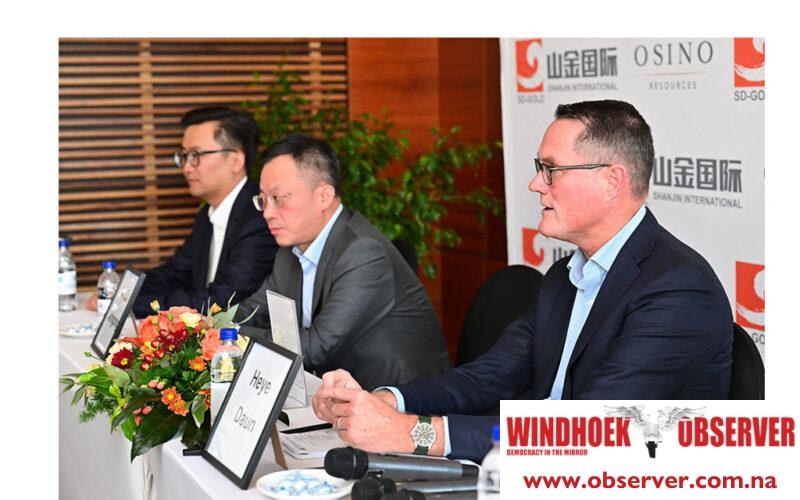CHAMWE KAIRA
There is little hope that Namibia will be able to refine gold locally in the near future. This is despite increasing gold production and the development of a third gold mine.
The outgoing CEO of Osino Resources, Heye Daun, explained that Namibia and South Africa have similar regulations around gold and that gold refining and all gold production in Namibia go to the Rand Refinery in Johannesburg.
“We had this discussion before. A refinery in Namibia is not economically viable. Refineries are very expensive. They require big orders of big magnitude,” said Daun.
Rand Refinery was established by the Chamber of Mines of South Africa in 1920 and is one of the largest integrated single-site precious metals refining and smelting complexes in the world.
Currently, Namibia has two gold-producing mines. B2 Gold’s Otjikoto Mine produced an annual record of 6 488 kilograms of gold in 2023. The company owns several Exclusive Prospecting Licences (EPLs), including EPL 2410, EPL 4309, EPL 6628, EPL 7744 and EPL 8408. The company recorded a profit of N$2.1 billion in 2023.
Production from the Navachab gold mine and the other gold mine increased by 37.4%, from 2 411 kg of gold bullion produced in 2022 to 3,312 kg in 2023. Navachab recorded a profit of N$411 million in 2023.
Shanjin International of China has since taken over Osino. The incoming CEO, Tony Zhang, said Shanjin, which means mountains of gold in Chinese, is looking forward to establishing the third gold mine in the country.
“We are in the process of appointing different contractors in terms of mining and building, and construction time,” said Zhang.
He said it would take about two years to develop the gold mine with a 2027 target production. Zhang said the company plans to explore all the EPLs owned by Osino. Zhang is a mining engineer who has been involved in building open and underground mines in China.
Osino is expected to employ 1000 people during construction and about 600 and 800 when the mine goes into production.
“We do not intend to bring Chinese companies to build this mine. We are an international company, so we have to go through a tendering process. We will go by the best price, whether it is a Namibian, South African, or Chinese company. We want this production to be as local as possible,” said Zhang.
On the other hand, Daun said that given the magnitude of the project, the contractors are more likely to be a mix of Chinese contractors, South African contractors and Namibian contractors.
“This project is too big to be only for local people. Everybody can have a piece of it. I think it’s going to be a mix,” said Daun.
The current lifespan of Osino’s Twin Hill project is expected to be 13 years, but Daun indicated that the life of mine can be expanded in the future.
Given the current high price of gold on the market, he expressed confidence in the extension of the life of mine. Daun used the 1980s-era Navachab gold mine as an example.
Anglo American built it with a forecast of one million ounces, but it now has an estimated reserve of 3.2 million ounces. He stated that Navachab has produced over two million ounces in the last 35 years and still has three to four million ounces left.
“Navachab has gone from a 10-year-old to a 50-year-old operation. These types of deposits tend to grow and extend the life of the mine. I think Twin Hills will be the same, a 20-year-old mine at some stage,” said Daun.




